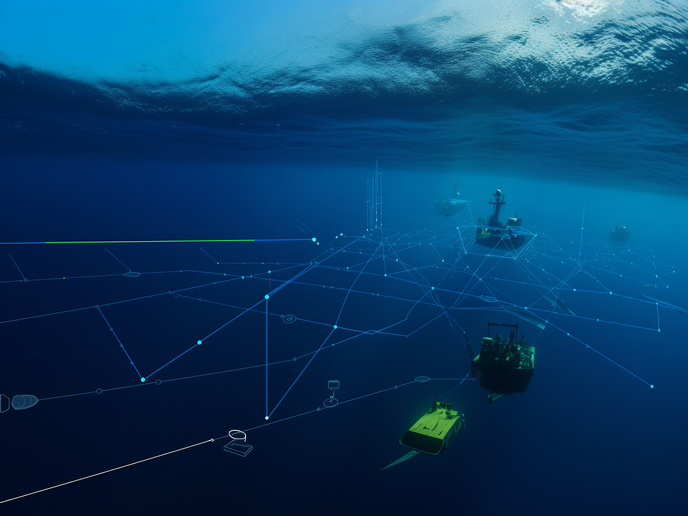European research infrastructure opens new possibilities to observe the marine world
Underwater and surface marine autonomous systems (MASs), especially underwater gliders, have been pivotal in supporting environmental observations and blue economy activities for some years. These agile and cost-efficient vehicles can carry scientific payloads even under 6 000 metres. But to exploit all the advantages of these assets, it is necessary to have an infrastructure capable of meeting different demands – from marine research and monitoring to public services and industry needs. The EU-funded project GROOM II has designed a sustainable marine research network at European level. Building on its predecessor study, it aims to be the basis for an advanced marine research infrastructure for MASs, called GROOM RI, that promotes scientific excellence, fosters innovation, supports the blue economy and establishes public and industrial partnerships.
Shifting to marine autonomous systems
With 14 partners from 12 countries, the project is taking a step further in integrating the European infrastructure landscape for MASs, supporting connections for the global and European Ocean Observing Systems. “GROOM II maintains a unique centralised provision of cyberinfrastructure, data and knowledge for the optimised use of MASs to study climate and marine environments, and to support operational services and the blue economy,” states Laurent Mortier, GROOM II project coordinator. According to Laurent Mortier, “the European landscape is shifting towards more autonomy, and marine autonomous systems will and already do in some cases, play a central role in the future of ocean observing.” He mentions the Future Marine Research Infrastructure programme in the UK, which aims to move towards net-zero activities using floats and more MASs – a vision also shared by the GROOM II partners. To make this outlook a reality, a strong operational research infrastructure is paramount.
Impacts of the project
The consortium has considered a set of use cases to better understand how to link the services of a future distributed marine research infrastructure. For instance, a main impact of GROOM II is to improve ocean forecasts by increasing observing capabilities and adequacy of observations with a minimum increase of carbon footprint. To ensure that MAS operations at sea are useful for this purpose, a digital infrastructure could allow for complex piloting activities, minimising human supervision of the system with automation and AI. In this scenario, the project also develops a framework that enables interoperability at all levels, creating standards for data formats and quality so it can be best assimilated in forecast models and optimally exploited. Other potential contributions of the project’s research network include monitoring of biodiversity and biogeochemistry, response to emergency situations and discovery science as well as providing support to different international initiatives related to ocean observing. “By developing solutions to increase the MAS deployment capacities, the GROOM II partners will be able to provide data that will break down present barriers in marine environment observing,” asserts Laurent Mortier. Overall, this involves better monitoring for EU climate goals and marine policies, emergency response to disasters such as oil spills or harmful algal blooms, and other needs from the blue economy sectors. GROOM RI’s vision and work has also led to the creation of a new project, named Advance Marine Research Infrastructures Together (AMRIT), which aims to be the cornerstone of the European Ocean Observing System, integrating key services from all European Marine Research Infrastructures for ocean observation within a single framework open to all users.
Keywords
GROOM II, marine autonomous systems, marine research infrastructure, blue economy, glider, ocean observing systems



